|
A leisurely stroll through Lucan Demesne even in these grey days of mid-winter brings us into a world of nature, the Liffey thundering over the weir and magnificent trees reaching upwards and reflecting their glory in the water.
The field opposite St Catherine’s castle ruins has a small herd of Highland Cattle now (about 20 or so). This is a sturdy breed which can stay out in all weathers throughout the year without buildings or any protection from even the most inclement weather. The experiment in keeping and grazing cattle in the various flood plains along the Liffey (called the Flat Plains Project) commenced in 2011 and has been a great commercial success as the cattle eat the wild meadow-grass and plants which grow in abundance along the river bank. The animals have a distinctive appearance with red shaggy hair and long horns which are not removed, giving them a fierce appearance, but they are really quite docile in temperament and just like to be left alone.
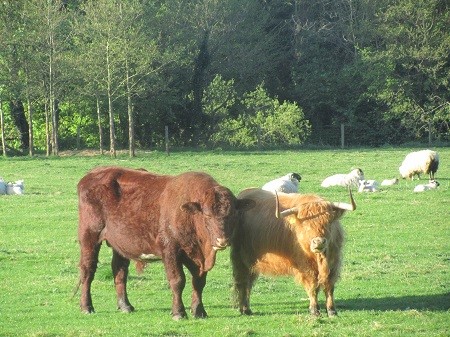
There has been only one escape bid since the Highland cattle were moved to the St. Catherine’s paddock. One young heifer broke through the post and rail fence and took off into another field. She stayed away for a few hours grazing and looking about, however, as soon as it got dark she raced back home to the comfort and security of the herd.
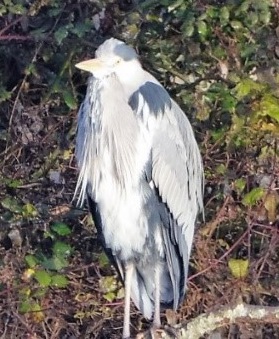
As you walk along by the river bank you are sure to spot the silent, motionless and furtive Grey Heron. Each bird has his own territory on the river of about 500 metres or so, this area is jealously guarded from any visiting herons. The grey plumage and stature of Grey Herons make them unmistakable. It is a very familiar species being widely distributed and a year round resident in Ireland. They can often be seen when poised motionlessly at the edge of water bodies, coiled ready to strike out at unsuspecting prey with its formidable spear like bill. It feeds along the edge of a wide range of wetland habitats form coastal waters and estuaries to loughs, streams and marshy ground. They are usually encountered as solitary birds, and their numbers have increased noticeably along the Liffey and Lucan Demesne.
The most common wild creature by far in the Demesne is the grey squirrel. They are large, numerous, and bold as they scurry up and down the tree trunks and higher branches, showing little or no fear of the human visitors who enter their busy world. They have been known to shower passers-by with nut fragments from their safe positions near to the top of the trees.
The squirrels have grey fur and often sit upright with their large bushy tails arched over their backs. Grey squirrels originally from North America, were released in Ireland by 9th Century landowners. They drove out the native Irish red squired as they are larger and more aggressive and now they are the dominant species in almost all parts of the country.
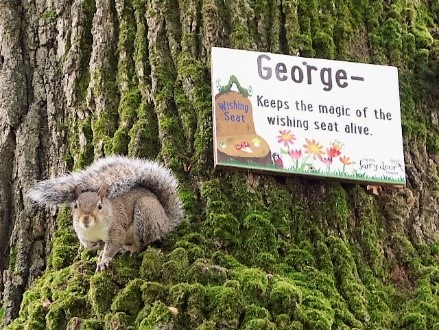
Their nest is called a dray and is a compact structure about the size of a football, constructed of twigs, leaves, grass and bark. The squirrel can have two litters of young per year, when food is in good supply in particular.
In Lucan Demesne they are numerous, healthy and highly visible with the trees bare. Reports on squirrel health / numbers confirm that they are doing well all along the Liffey Valley. This is a good sign of the environment and it is in all our interests.
One of the most people friendly birds which you will encounter on your walk through the Demesne is the robin and it is easily recognised by everyone.
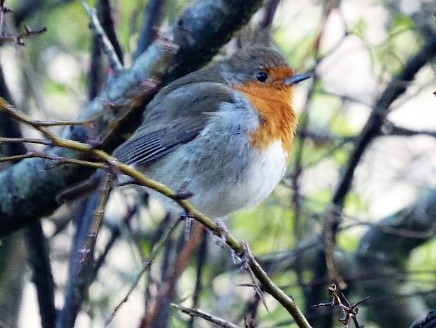
It is a plump bird with bright orange red breast, face, throat and cheeks edged with grey, a white belly and olive-brown upper parts. Robins are territorial all year round. During the spring and summer this territoriality is for breeding, but at other times territory is held for feeding and will be defended to the death.
Robins will appear to us as friendly as they come up really close to us, especially if you are carrying goodies for the ducks or digging in the garden for example. Of course, this wily bird is looking out for a nice morsel of bread or a juicy worm and not trying to have a friendship with us, however, everyone loves to see the robin with its tame behaviour and funny hop long antics.
Robin Superstitions. The Robin is the most loved of all the wild birds and dire are the omens if you should kill one!
The robins in the Lucan Demesne are plentiful and plump and will bring only happiness to those who enter their special world.
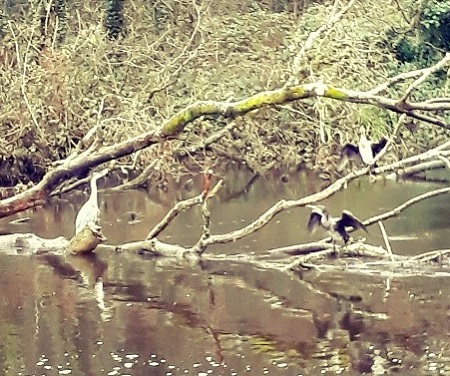
The development of St Catherine’s Park into a top class amenity of river, walk and woods over the past few years has given us a facility in our area to be proud of. Locals and visitors alike walk or cycle the pathways along the edge of the river for exercise or recreation in peace and safety. This is without doubt a place of exceptional beauty, a gift we all have inherited from the hand of nature and we must mind it carefully for the next generations.
By Rose Fitzgerald
|